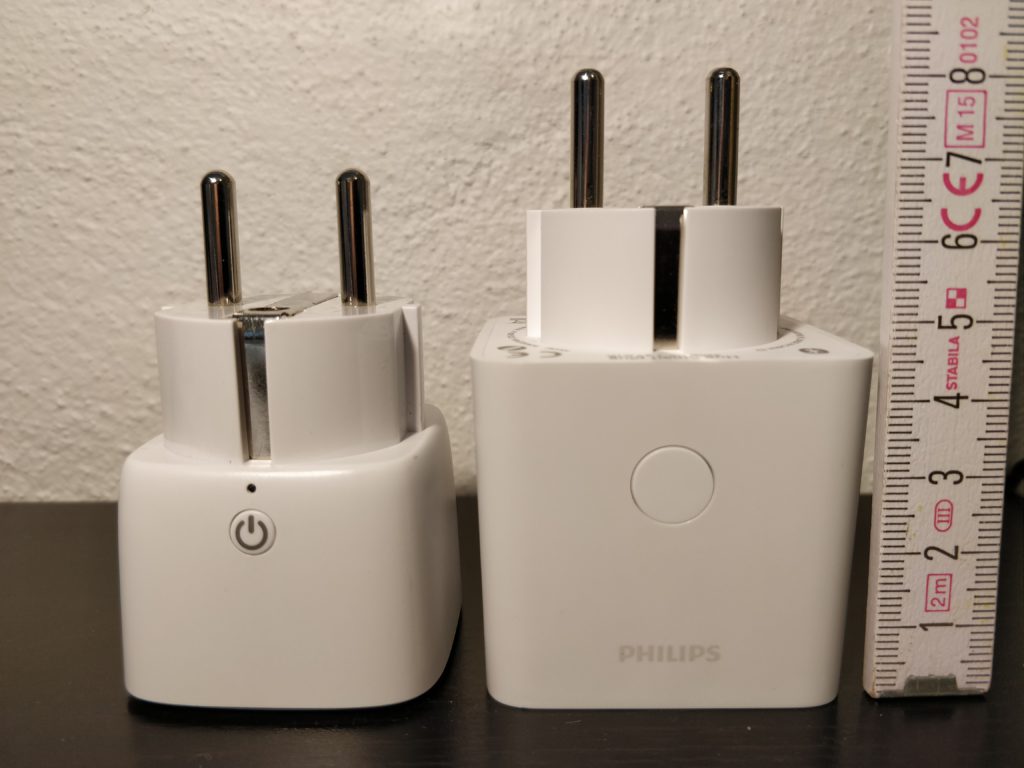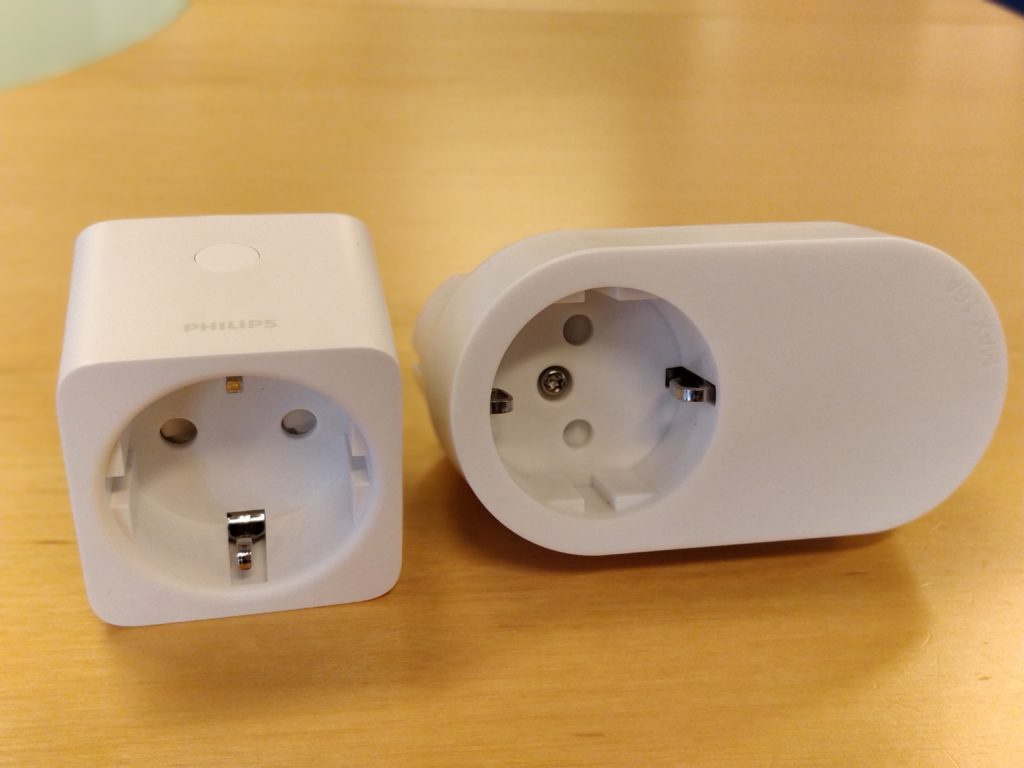Quick review/comparison of Innr Smart Plug and the new Philips Hue Smart Plug. First impression:

Innr’s plug is considerably smaller, and the Hue plug actually feels clumpsy next to it:

Now, let’s compare functionality. Both plugs have a two-color LED showing whether it’s on or off, and both also have a physical button to turn it on or off. Both plugs are easy to integrate with a Philips Hue bridge and offers the same functionality. The Philips Hue plug also supports Bluetooth.
IKEA Trådfri
Let’s quickly throw in an IKEA Trådfri wireless control outlet before we compare power consumption. I collegue of mine brought one:

It’s even bigger than the Hue version, and also without any physical button. However, at only half the price of the Hue/Innr plugs, it’s definitely worth considering where size and the physical button doesn’t matter.
Power consumption
- Philips Hue: 0.1 W when off, 0.8 W when on. (0,003/0,019 kWh in 24 hours)
- Innr: 0.3 W when off, 0.7 W when on. (0,010/0,017 kWh in 24 hours)
- IKEA: 0.1 W when off, 0.8 W when on. (0,002/0,019 kWh in 24 hours)
The winner is… Innr Smart Plug when physical size matters. Hue uses 0.1 W more than Innr when on, but 0.2 W less when off, so if turned off most of the time, it might be a better choice. The Hue plug also has Bluetooth, so it can be used without a ZigBee bridge.
In Denmark prices are exactly the same.
